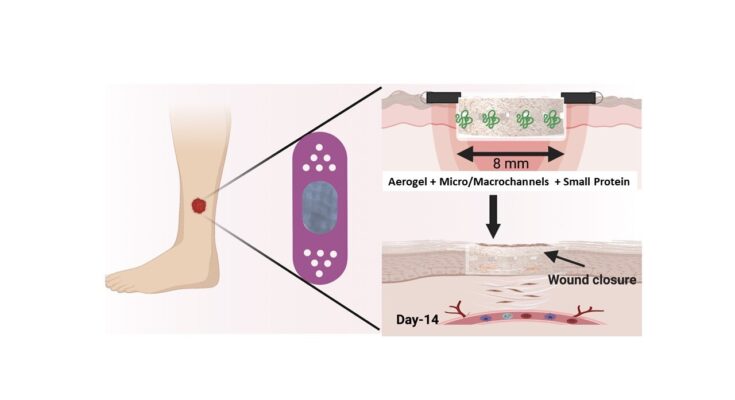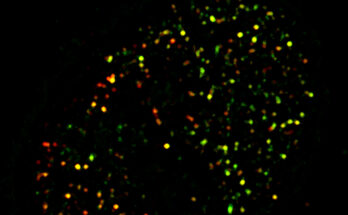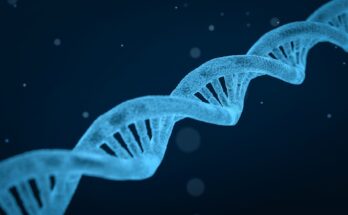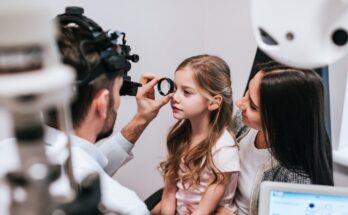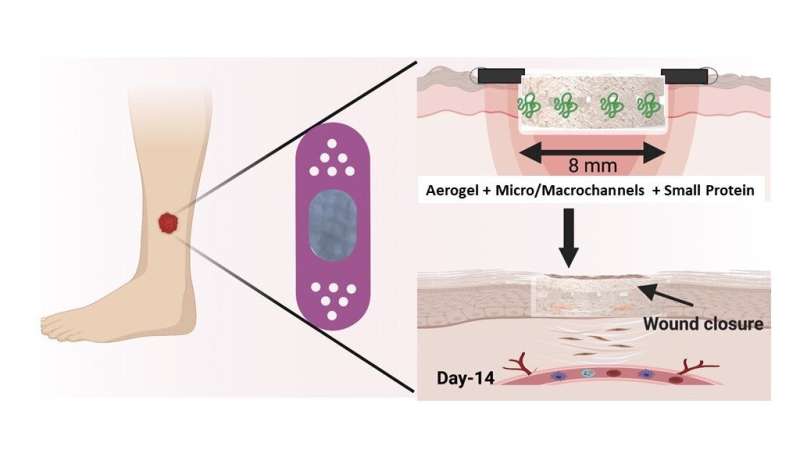
A collaborative team of scientists from the Terasaki Institute for Biomedical Innovation and the University of Nebraska Medical Center has developed a fibrous aerogel that promotes faster and more effective healing of diabetic wounds.
As detailed in their publication in Advanced Functional Materials, the micro/macrochannels engineered within the aerogel facilitate the ability to heal chronic diabetic wounds, while a novel protein incorporated into the aerogel provides anti-microbial capabilities and promotes wound tissue coverage and new blood vessel formation.
In general, diabetic foot ulcers (DFUs) are challenging to manage. Numerous patients with DFUs must undergo amputations each year, which significantly impacts their quality of life. In the United States alone, costs for the treatment of non-diabetic foot ulcers are estimated at $1.38 billion annually. Impaired healing and poor clinical outcomes are associated with DFUs due to underlying problems with blood circulation, nerve damage, immune function, and fibrosis. DFUs that do not heal also have a lower chance of recovery after surgery.
Certain types of cells and molecules must migrate to the wound site during routine wound healing; these cells initiate blood vessel formation and tissue regeneration, which are required for rapid wound repair and closure.
Microarchitecture of dressings is crucial in sustaining the wound structure by allowing cells to migrate through the dressings to close the wound. The UNMC/TIBI team engineered nanofibrous aerogels containing an organized microstructure that facilitated cell migration, oxygen, and nutrient delivery to the wound bed.
Moreover, preventing infection is also crucial in the rapid healing of DFUs. The team has incorporated a novel anti-microbial peptide into the dressing to prevent bacterial growth and promote healing. The advantage of this novel peptide is its low-cost and potency compared to commercially available anti-microbial agents.
Using a type 2 diabetic wound mouse model, the team demonstrated that their novel dressing healed DFUs in 2 weeks which was significantly faster than previous dressings.
“The combined properties of our nanofiber aerogel work synergistically to produce a superior treatment for diabetic wounds,” said Ali Khademhosseini, Ph.D., TIBI’s Director and CEO. “And it offers the potential for use in future biomedical applications.”
Johnson V. John et al, Nanofiber Aerogels with Precision Macrochannels and LL‐37‐Mimic Peptides Synergistically Promote Diabetic Wound Healing, Advanced Functional Materials (2022). DOI: 10.1002/adfm.202206936
Provided by
Terasaki Institute for Biomedical Innovation
Citation:
Microchannel-containing nanofiber aerogels with small protein molecule enable accelerated diabetic wound healing (2022, November 22)
retrieved 22 November 2022
from https://medicalxpress.com/news/2022-11-microchannel-containing-nanofiber-aerogels-small-protein.html
This document is subject to copyright. Apart from any fair dealing for the purpose of private study or research, no
part may be reproduced without the written permission. The content is provided for information purposes only.
Source link

